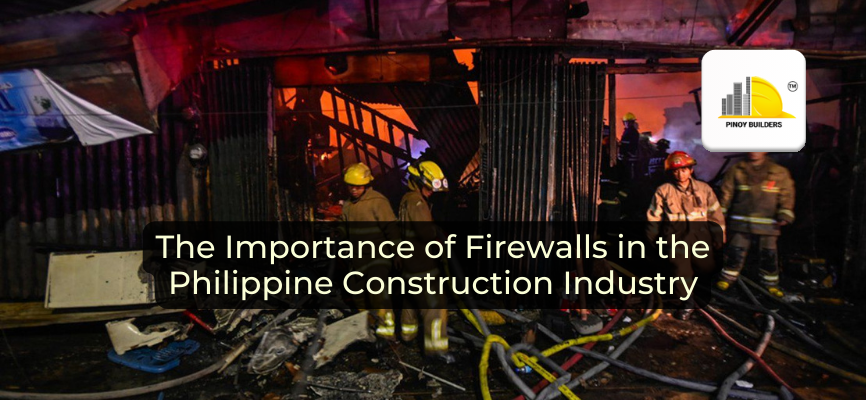Many areas in the Philippines are now more vulnerable to fire hazards and spread as temperatures continue to rise at an alarming rate—reaching past 40℃ in various regions.
A major fire that has hit the headlines recently involved a two-storey commercial building located on Pedro Gil Street in Paco, Manila, as well as Paco Catholic School which were engulfed in flames last April 20. The fire began at 8:00pm and spread throughout the establishment due to the construction’s light materials. Firefighters were able to extinguish the fire at 1:45am, April 21. The cause of the fire and damages are still under investigation.

Image via ABS-CBN News
Fire accidents and disasters can be prevented or mitigated through implementation of firewalls in buildings and construction. But first, what is a firewall?
A firewall is basically a barrier or partition built between structures that protects against the spread of fire. It is made with concrete blocks and reinforced concrete with a minimum thickness of four inches of solid concrete that can withstand fire for an hour.
This article highlights the sections enumerating the importance of fire-resistive requirements such as firewalls as stated in the National Building Code of the Philippines, and how the country’s construction industry should strictly abide by it.
CHAPTER VI FIRE-RESISTIVE REQUIREMENTS IN CONSTRUCTION
- Section 601. Fire-Resistive Rating Defined.
Fire-resistive rating means the degree to which a material can withstand fire as determined by generally recognized and accepted testing methods.
- Section 602. Fire-Resistive Time Period Rating.
Fire-resistive time period rating is the length of time a material can withstand being burned which may be one-hour, two-hours, three-hours,four-hours, etc.
- Section 603. Fire-Resistive Standards.
All materials of construction, and assemblies or combinations thereof shall be classified according to their fire-retardant or flame-spread ratings as determined by general accepted testing methods and/or by the Secretary.
- Section 604. Fire-Resistive Regulations.
The Secretary shall prescribe standards and promulgate rules and regulations on the testing of construction materials for flame-spread characteristics, tests on fire damages, fire tests of building construction and materials, door assemblies and tinclad fire doors and window assemblies, the installation of fire doors and windows and smoke and fire detectors for fire protective signaling system, application and use of controlled interior finish, fire-resistive protection for structural members, fire-resistive walls and partitions, fire-resistive floor or roof ceiling, fire-resistive assemblies for protection of openings and fire-retardant roof coverings.
The construction industry as well as the general public should be aware of the national building code as a guide on how we can keep our communities safe from disasters or tragedies that can be caused by fire and other elements.
References:
Santos, Pat C. & Villamente, Jing. (2024 April 22). Paco fire injures 1. Daily Tribune. https://tribune.net.ph/2024/04/21/paco-fire-injures-1
Importance of Single Firewall For Houses And Their Benefits. (2022 October 11). Lumina. https://www.lumina.com.ph/news-and-blogs/blogs/importance-of-single-firewall-for-houses-and-their-benefits/
Presidential Decree No. 1096. (1977 February 19). Official Gazette. https://www.officialgazette.gov.ph/1977/02/19/presidential-decree-no-1096-s-1977/








